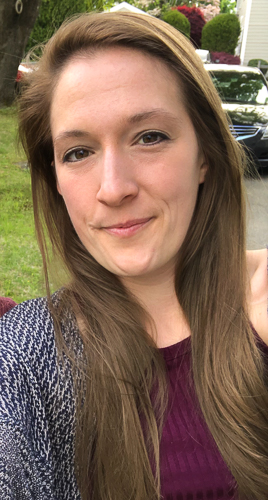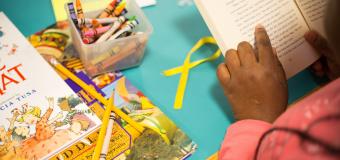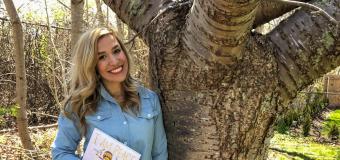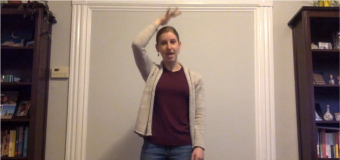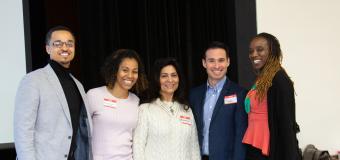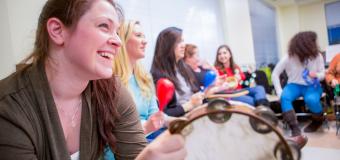Education inside or outside the confines of a global pandemic is about adaptability and improvisation in matters large and small. Depending on the needs of the school and its students, teachers need to take an expanded view of their role as educators, even if the tasks at hand don’t match their job descriptions.
And they also must find creative ways to close the gap between classroom needs and tight public-school budgets.
Christine Jozitis, who just earned her master’s degree in our Community, Arts and Education program, and who earned her bachelor’s in art therapy in 2011, knows these lessons too well.
“All of us Boston Public Schools teachers will tell you that this a lot, or probably any public school teacher, really,” says Jozitis, a visual arts teacher for grades 5-8 at the Edison School in Brighton, Massachusetts. “There’s your title that is written on your contract, and then there’s what you actually do.”
The list of what Jozitis actually does is extensive, including teaching health and sexual education, and running the school’s restorative justice initiative. And, like many teachers, her other role is as a de-facto fundraiser for her own classroom.
“I had started a DonorsChoose to buy some pretty big furniture items for my classroom,” says Jozitis about a crowd-funding platform popular with teachers. “We have a very old building.”
Classroom cash
Though she enjoys the support of her school’s administration and others, she needed to be creative in her plan to turn her classroom into something of an art studio, especially for the older students, and she needed storage cabinets, large tables and other items not covered by the school budget. Fundraising on the DonorsChoose platform was initially sluggish, so Jozitis staged a silent auction of her own art on Facebook — she focuses on mixed media, often working on a “canvas” of old books. To juice the proceeds, the college volleyball player spurred bidding wars among her friends and fellow athletes, tapping into their competitive streak.
When the auction was over, she had raised $945 from items she was looking to discard during she and her partner’s recent move. She doubled the haul via a “matching day” on the DonorsChoose platform. She is eager to expend the fund to transform her classroom.
Unfortunately, COVID-19 had other plans, so the furniture purchase is on hold while classes are held virtually, rather than at the school. The state-ordered remote-learning model, while believed necessary for public health and safety, highlighted a number of educational disparities between affluent public schools, and economically disadvantaged ones like the Edison School, whose student body is predominantly a mix of African-American, Hispanic and immigrant children. Many of the students have special needs or are English language learners.
“We have a mix of everything, from all over the city, from all over the world,” Jozitis says, estimating that 60 different countries of origin are represented in her inclusive school, where she adds that almost every student comes from households of limited means.
Technological and social achievement gap
Though the school was able to provide laptop computers and other devices to support kids’ at-home learning, the technology subsidy further exposed the lack of equity between Edison students and their more affluent counterparts in other districts.
“What my opinion has been is that: Wow, as soon as the pandemic popped up, we had a truck with 30,000 Chromebooks headed towards Boston for Boston Public Schools, and that happened within two days,” she says. “As of two weeks ago, I think we had 100 percent of our students with a device in the home, and WiFi or hotspots set up.
“And while it’s taken us a few weeks to get there, we’ve proven that even our students who live well below the poverty line could have had access to all these resources all this time.”
In contrast, Jozitis says, school districts in places like Newton and Waltham “are 1-to-1 with students-to-device.”
“But our students are black and brown and we, as a culture, provide less for them,” Jozitis says, adding that the technological inequity makes “closing the achievement gap between black and brown students and their white and Asian peers” nearly impossible.
